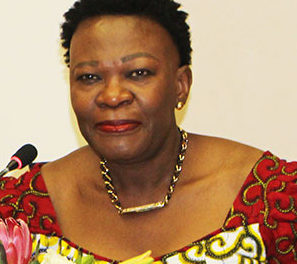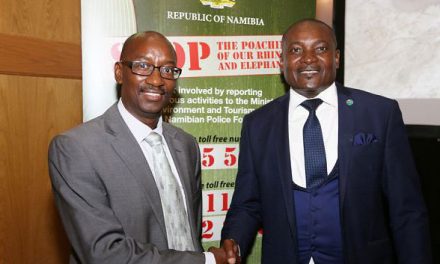
Long-term study on the damage caused by uncontrolled bush fires serves as practical demonstration of the concept of sustainability

Setting the bush alight in September and October is a practice as old as Africa itself. Based mostly on superstition, it is believed this appeases the rain gods and prepares the veld for the next rain season, starting in southern Africa usually in October.
That uncontrolled bush fires are highly detrimental to the environment, is very difficult to convince local communities of. The usual response is that it has been done as long anyone alive can remember and that it is part of a very strong tribal tradition.
Recently, the results of a ten-year study and the demonstrable benefits of using fire selectively, have started making an impression of the residents of the Nyae Nyae Conservancy in the former Bushmanland, now part of the eastern section of the Otjozondjupa region.
In this conservancy, a trend was noticed, showing that more and more bush and grass were destroyed every year by fire and that it had a measurable negative impact on the land as a natural resource.
“In the Nyae Nyae Conservancy, in 2010 over 50% of the conservancy area burned and despite some fluctuations there was a continuous upward trend which if not addressed in one way or another would seriously impact and threaten the survival of the community as well as fauna and flora in the area,” stated the Nyae Nyae Development Foundation when it released an overview of the study results.
“In 2013 it was decided that increased surveillance of fire was necessary as well as taking a pro-active management approach. Initial attempts to introduce early burning or fuel management while welcomed by the community, were not as well-accepted by others who supported fire breaks and fire fighting even though this had been amply demonstrated to be ineffective in an area of 9,000km² with vast inaccessible areas,” the foundation stated.
After becoming aware that uncontrolled fire destroys their livelihood, the Nyae Nyae communities, scattered over several villages, began using fire management methods, based on the same principles they have traditionally used, but now targetting selected areas. They only burned the areas around villages and where they utilised natural resources, and they only burned in the middle of winter.
The communities were assisted by researchers using historical Remote Sensing fire maps and a Normalised Difference Vegetation Index. From this it was able to locate high priority areas where the build-up of combustible material, i.e. tinder in the form of dry grass and bush, has become a serious risk.
Only these areas were then selectively burned to remove the excess dry material, to reduce the risk of uncontrolled fires around villages in the hot months from September to November.
However, observations over a number of years showed that when an area had been burned in one year, burning it again the following year was not necessary. This lead to the realisation that a standardised annual fire management plan did not meet conditions on the ground.
In stead, the surveillance data had to be reviewed each year, and a season-specific fire plan had to be adopted for that year.
For instance, after four years of running the project, the 2017 priority burn map showed only a few areas with high or very high dry material build-up so intervention was restricted to these hotspots.
This was not the case last year with the 2018 priority burn map indicating much larger areas where the risk was elevated due to the accumulation of large volumes of dry material, requiring more intervention.
The overall project can be divided into two phases, the first, a monitoring phase from 2009 to 2013, when no fire management principles were applied, and the second, the intervention phase, from 2014 to 2018.
During the first phase, it transpired that the Nyae Nyae villagers destroyed nearly 40% of their natural resources every year by using fire indiscriminately. In the second phase, this figure reduced by more than half with only 16% of their veld burnt every year.
In addition to the extent and frequency of fire being reduced, the timing of fires was shifted to the mid-season, June to August, rather than the later hot season, September to November when fires are likely to be hotter, causing more damage and running out of control.
The Nyae Nyae Foundation said the project will continue in the coming years to collect more data to design and implement a viable fire management plan to prove to the communities the benefits of conservation.
“It is essential that this work continues as this really is about life and death for the people living on the conservancies. It is about their cattle, their food security and their way of life. Controlling the fires using new methods coupled with traditional ways of harnessing, managing and mitigating the damage caused by fire, will continue to be assessed, giving the conservancy more control over their lives and livelihoods,” stated the foundation.
Caption: The Nyae Nyae 2018 burn map showing all the areas of high (orange) and very high (red) fire risk from the accumulation of dry bush and grass. This map is in contrast to 2017 when much less intervention was required.












































